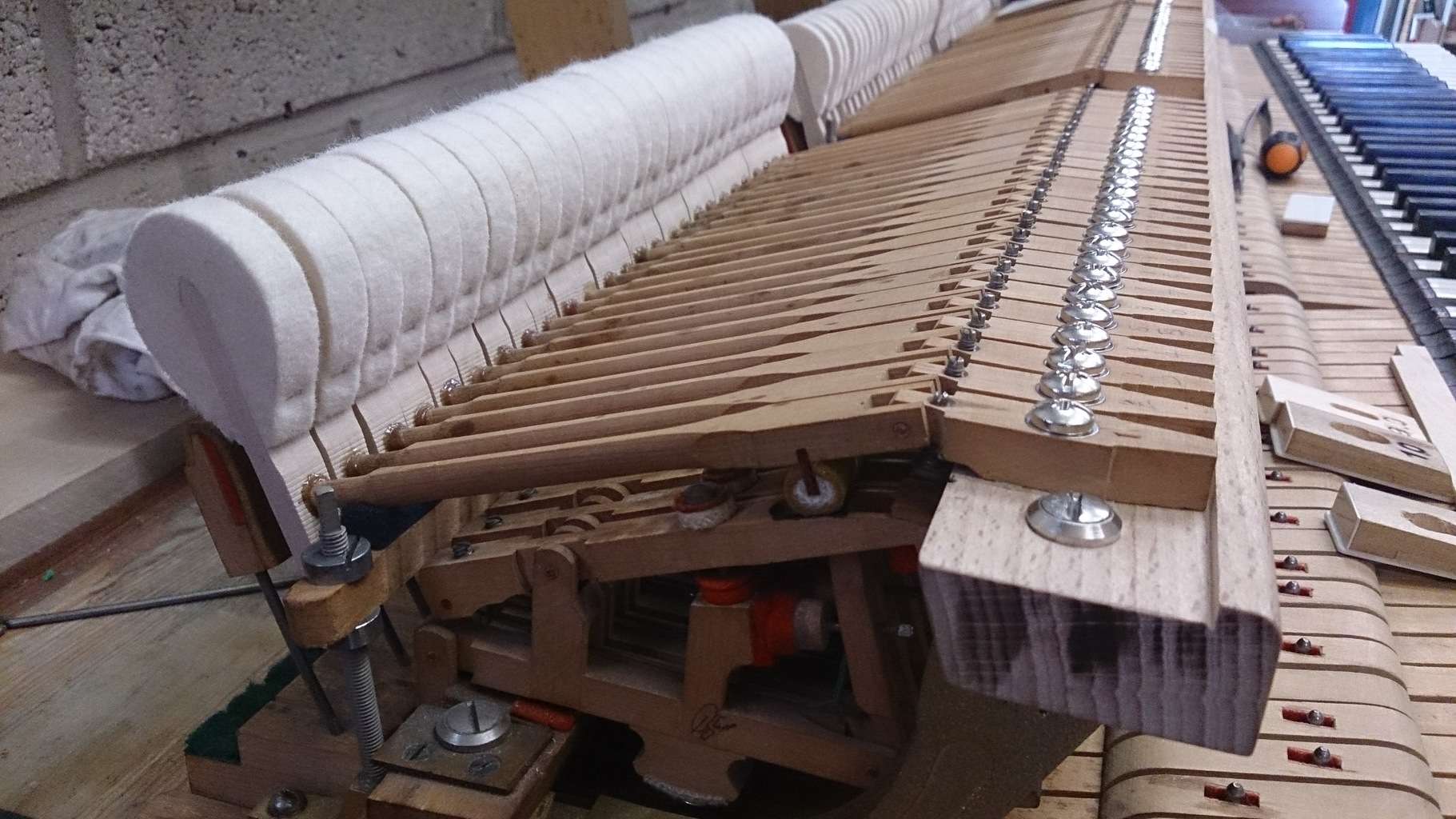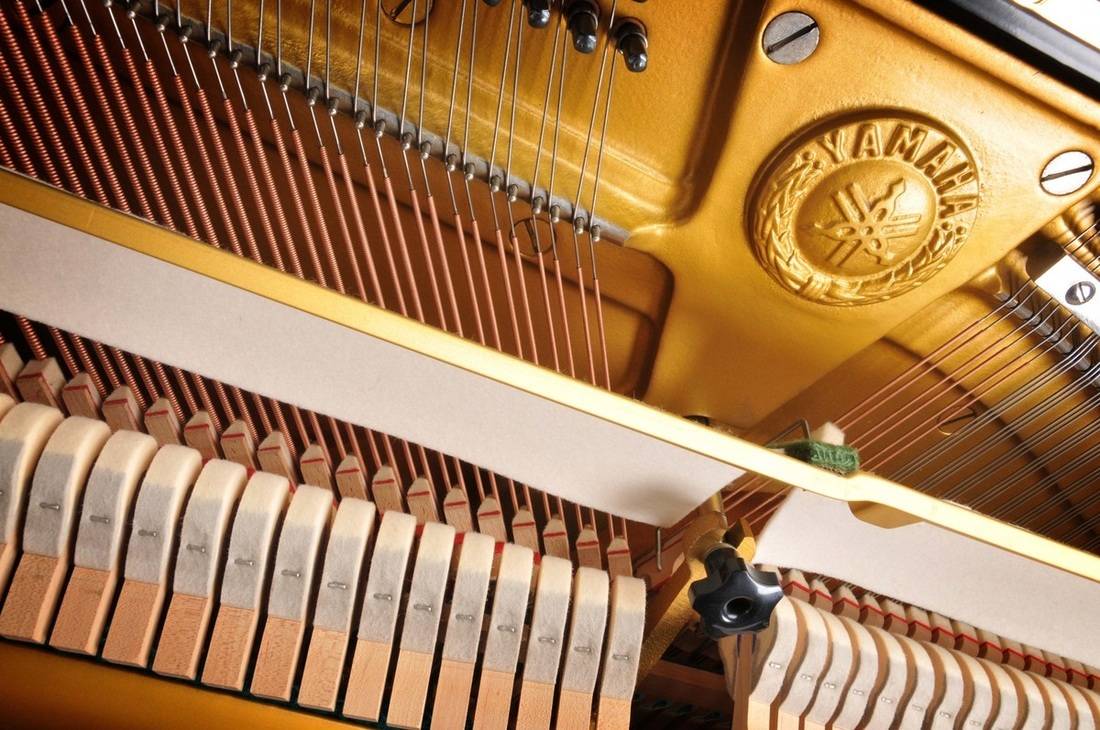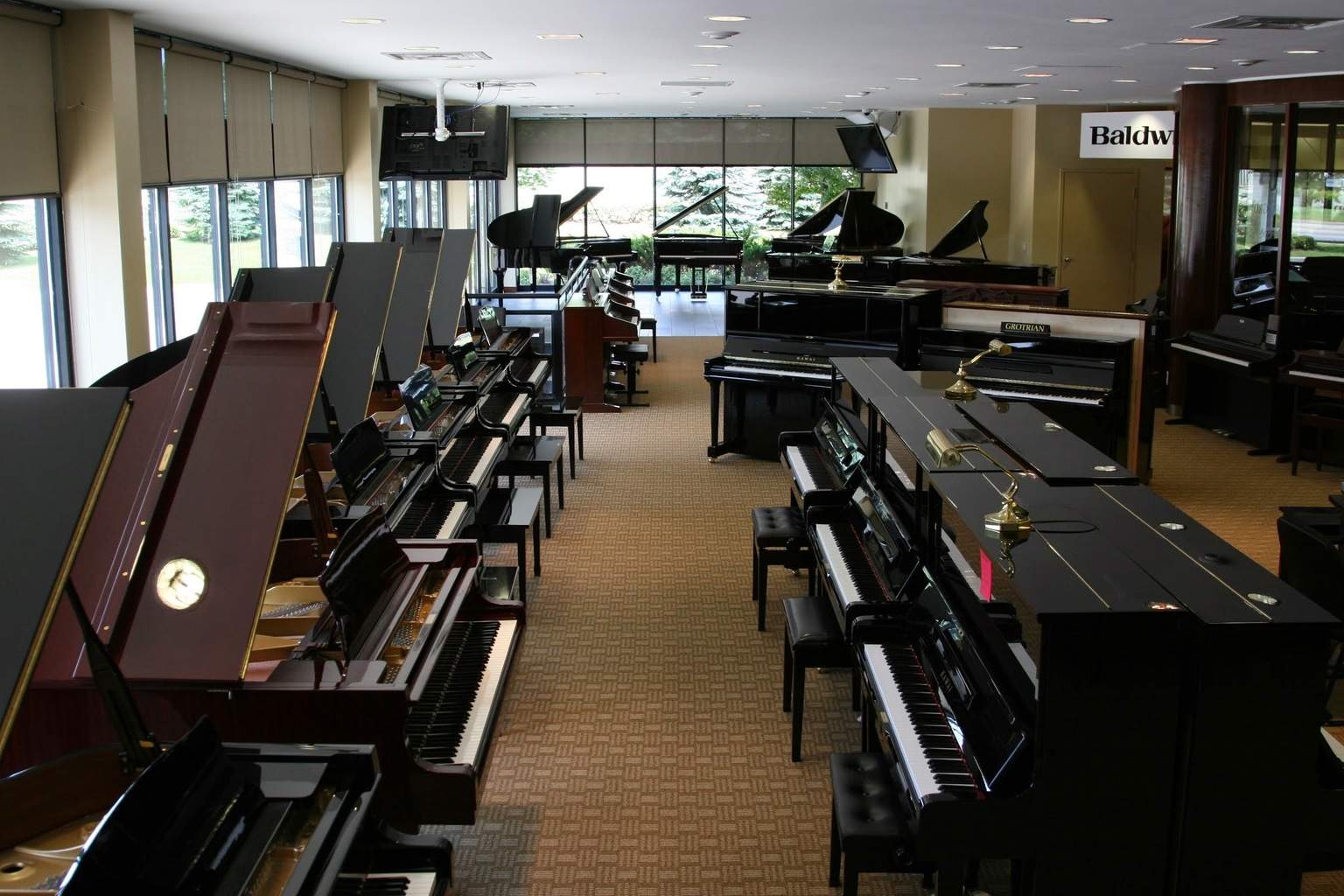The K-3 is a brand-new design from Kawai. It just came out in 2014 following up on it very successful K-3 model. The K-3 and the K 300 are two models that more often than any other piano on earth get compared to the Yamaha U1 and it’s pretty obvious why.
Both pianos are from Japan, they’re both 48 inches tall, and both companies lead the industry and quality control and value. We’re not just going to be looking at the similarities between the K-3 hundred and the U1, but specifically what the differences are to help you as a shopper decide which direction might make more sense for you.
One of the biggest difference between the K-3 hundred and the U1 on a technical level is the action design. The U1 uses what at this point could probably be described as a fairly traditional design that uses a combination of wooden synthetics to activate the jack and hammer.
The Kawai model specifically with the K-3 hundred continues the tradition of replacing its wood parts with carbon fibre components. Many experts have commented and agree that this is a stronger material and a lighter material than wood. Kawai did this of course for a couple of reasons.
One was maintenance, the other was musical performance. The lack of weight has actually sped the action up, and the lack of maintenance has reduced the cost to own Kawai’s product versus maybe some other upright pianos that require little bit more maintenance.
With the Yamaha you’re getting a really well-built, well designed but fairly traditional action. This creates the potential for a few problems through some seasonal changes, but generally speaking it is going to be a good reliable action which produces a nice bright tone, and it is easy to get a high volume out of that action.
On the contrary, Kawai uses a carbon fibre action which is is has the potential to lower piano maintenance costs, and it also has potential to speed the action up. Depending on the style of playing you do, this could have a minimal effect, but it could also have a fairly dramatic effect- you have to decide.
You definitely want to feel these instruments out because they definitely don’t feel the same, and one might appeal to a lot more than the other. It might surprise you which action you prefer.
Because Kawai uses a slightly longer string than the Yamaha, and because they taper the soundboards in a slightly different way than the Yamaha, the tone of the two pianos certainly not the same. What you have on the Kawai is a slightly deeper, slightly warmer, and slightly richer sound. That owes to the longer string and a different tapering of the soundboard. In the Yamaha you’ve got a slightly brighter sound and slightly sharper attack.
So again this is a very subjective stylistic preference from player to player. You really can’t say necessarily that one is better than the other, but chances are you will have your preference if you have a chance to sit down and play it.
Kawai certainly has a darker sound and so for people who perhaps are into a little bit more of the classical genre (specifically mid to late Romantic into Depression music) that darkness is going to connect well with that particular musical preference. Although again, this is very very subjective and we’re not passing judgments on particular tastes and in tone- just remarking on some of the differences.
The Yamaha of course can have a slightly brighter sound that’s owing to shorter string, slightly higher string tension, and a slightly harder hammer . If you listen to some of the recordings that have been done previously on some of the Yamaha pianos you might even be able to pick that up through these videos.
The third difference between the two pianos is undoubtedly the price. If you’re comparing a new Yamaha to a new Kawai, depending on what city you are in and depending on what country are in, you’re going to be seeing differences in price of anywhere from 10% – 20%.
I often get the question “If the Kawai is cheaper, then how is it that the Kawai can be considered the same. There must be reason that the Yamaha out prices the Kawai”. There’s probably several reasons why the Yamaha is more expensive than the Kawai. However I’m not sure a lot of those reasons are necessarily connected to the instrument itself.
Kawai and Yamaha as companies are structured very very differently. Yamaha is a multinational corporation, and their musical instrument division is only one of many. As a company Yamaha, is a very very effective marketer. You can see their support of various cultural initiatives like their big support of major jazz festivals, and they certainly do very very good job of making sure their instruments get placed on television spots.
You see Yamahas on a lot of stages and the majority of the time, Yamaha has been directly involved in getting those instruments that visibility. That does carry costs with it and so as companies invest in branding, they often need to recoup that cost by increasing the price of their products. As you see the value the product go up, and the price of the product goes up, they’re able to pay for the marketing that’s brought them to that point.
What Kawai has done for better or for worse is that they’ve largely stayed out of the marketing game. They don’t really support a particularly large number of events. They don’t focus on ad placements. There really is not a lot of magazine marketing or television marketing goes on with Kawai.
I have a feeling this is something to do with the fact that it’s still a family run- family-owned business, and they see business in possibly a more simple or slightly more old-fashioned way than Yamaha does. They leave it up to the dealers to go out and and create business and create value I get out in the community connect with teachers to and schools.
Being piano players ourselves here at Merriam, I think one of the reasons Kawai is always been a really natural fit is that we love to do that anyway! We’re always getting out into the music festivals. We’re always getting out in the community to participate.
The fact that Kawai’s are available at a slightly lower cost is given us the room to go out and do that. Largely speaking, that is the reason for this is price differential. The two pianos don’t identically cost exactly the same to make, but it is so close that it doesn’t even come close to accounting for that 10-20% gap. In the big picture, it is the difference between the companies, not the instruments, and I think that it is important to be aware of.




